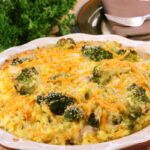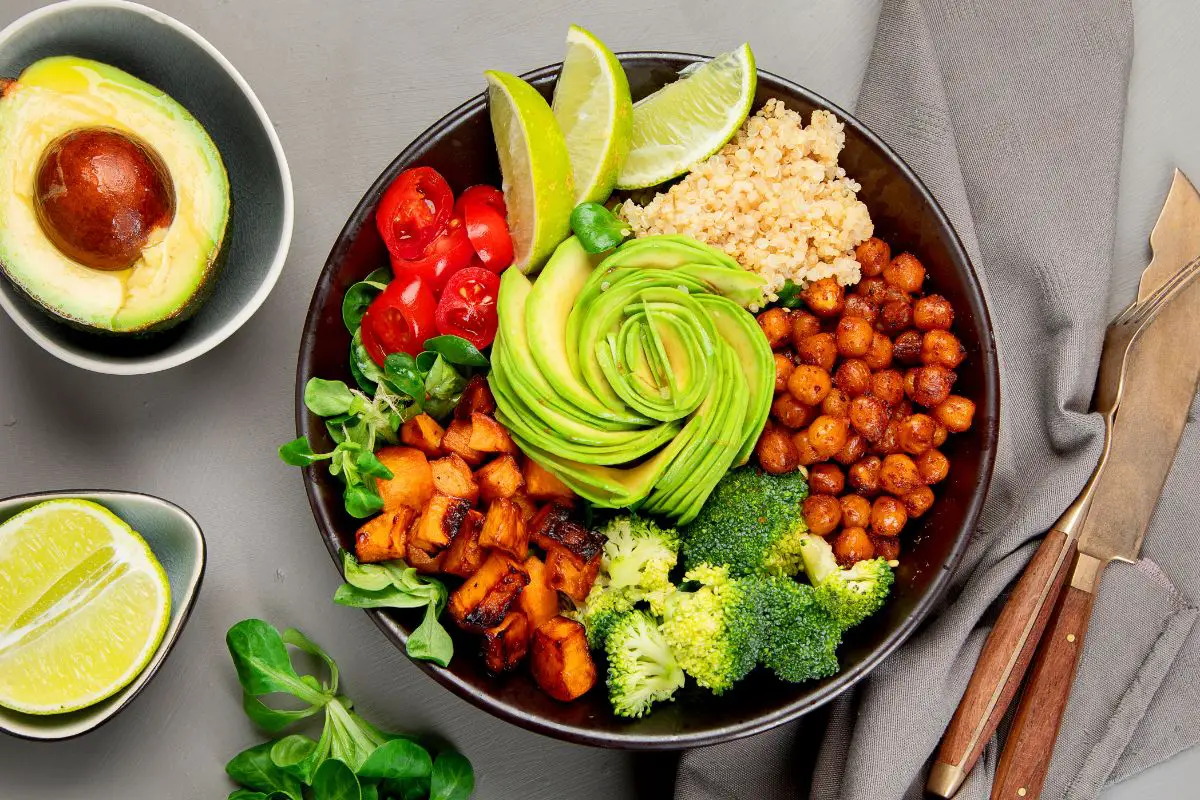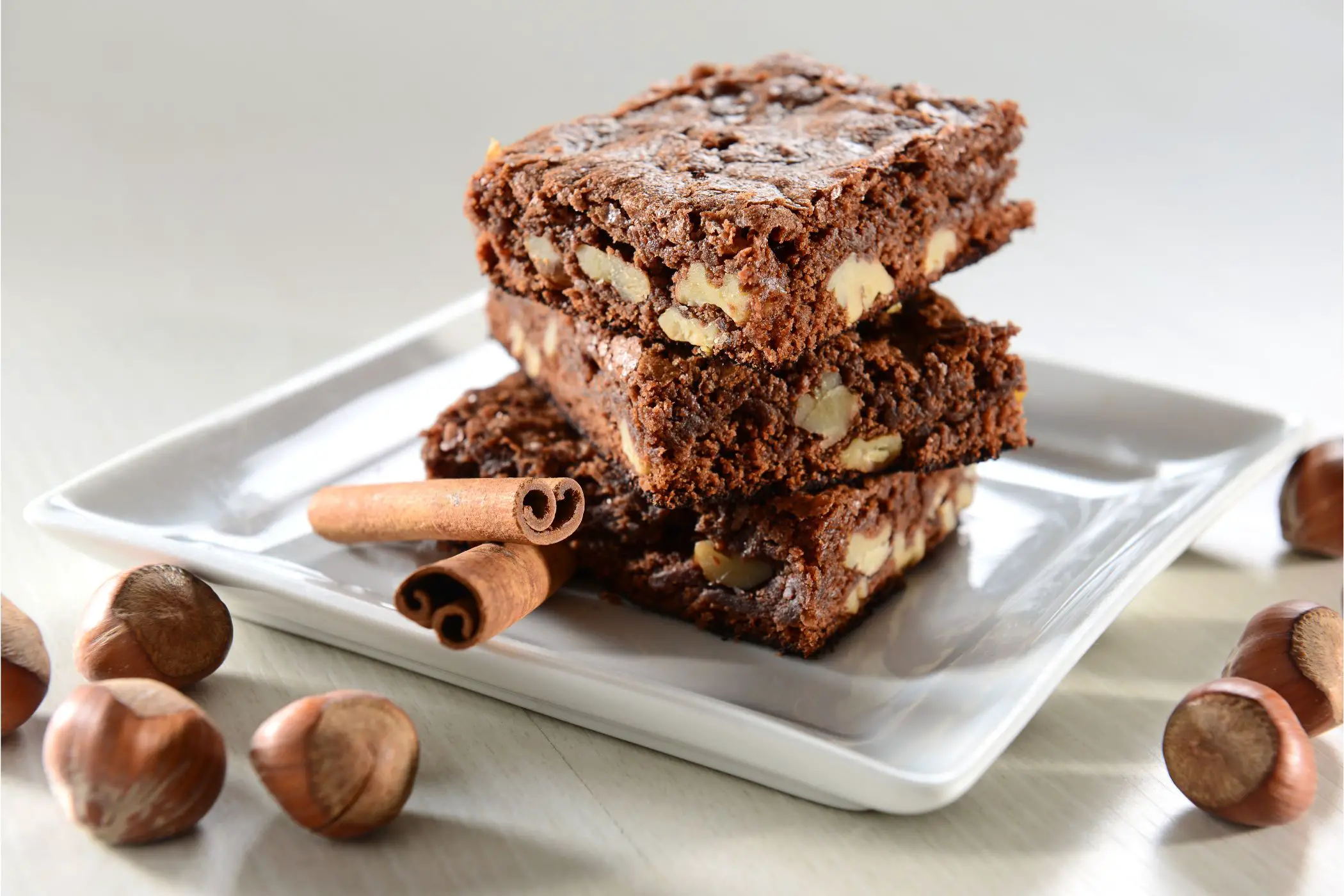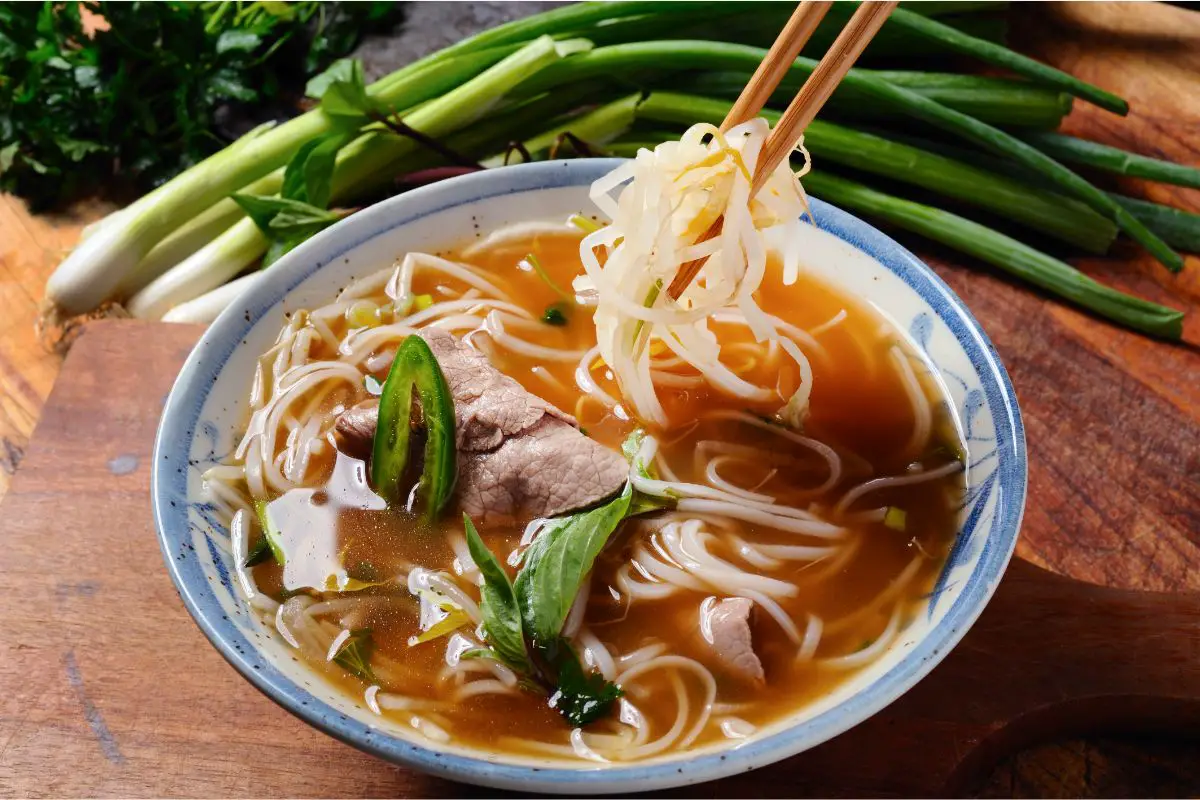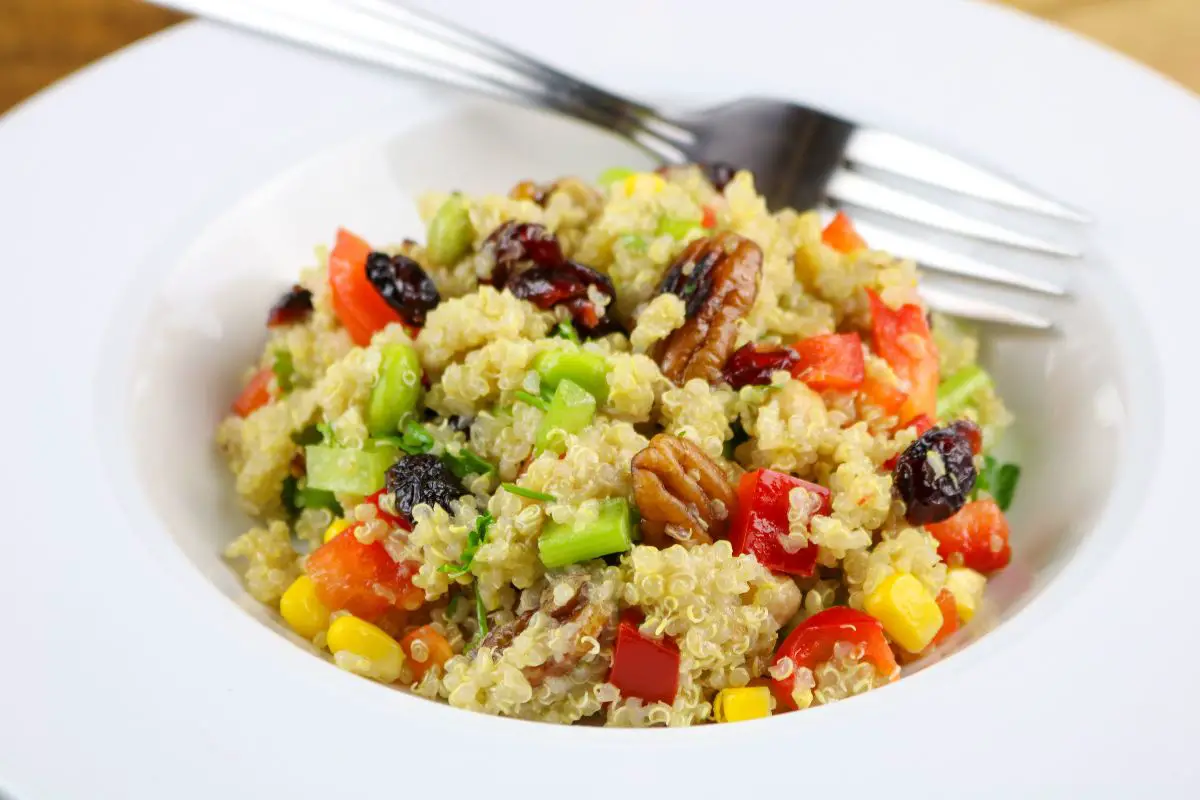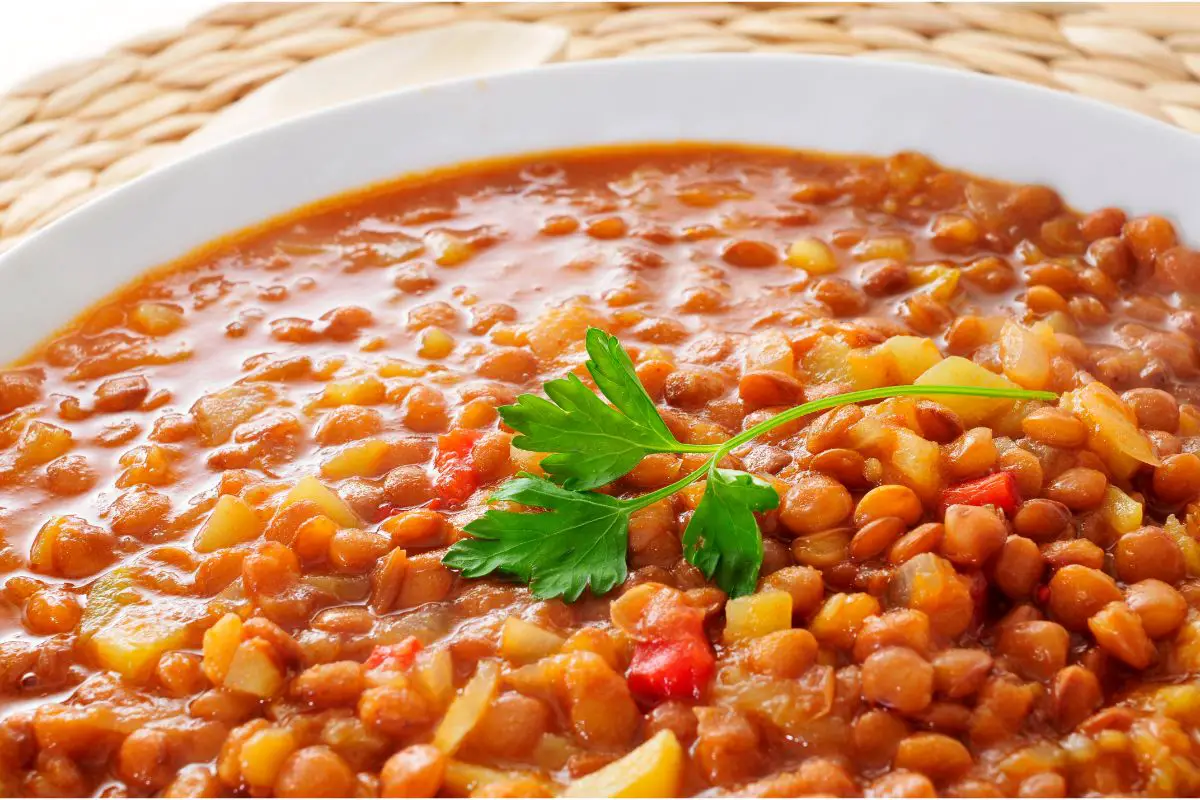This Red Lentil Dahl is an easy Indian-inspired recipe that will keep you full at mealtimes! You can whip this up as a main course or as a side dish to pair with rice or vegetables.
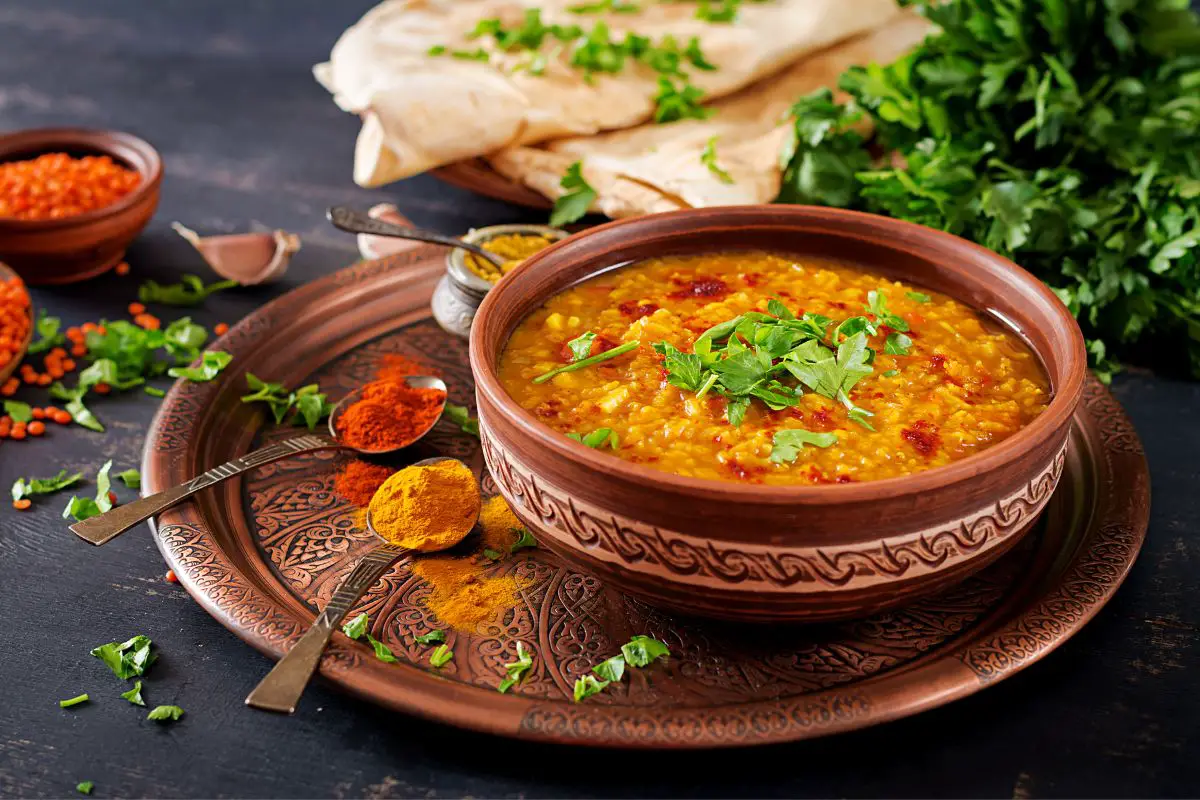
Lentil dahl is one of the easiest Indian dishes to make. It may look like a simple bowl of lentils, but it’s full of rich and hearty flavors.
You’ll be adding gorgeous spices and aromas to the dish which will certainly make your kitchen smell amazing!
You’ll find out how to make this tasty red lentil dahl in this post, including more information about red lentils and their health benefits.
Red Lentils: The Basics
Lentils are legumes that are inexpensive, full of nutrients, and available in a range of different colors. Lentils differ in terms of taste and texture. They are enjoyed in many cuisines around the world.
Red lentils can look red or orange, depending on the type you choose. These have a noticeable sweet taste and are also the quickest type of lentils to prepare.
Red lentils turn into a creamy concoction after they are cooked. This makes them great to include in soups and classic Indian dishes, like curries and dahl.
You can use red lentils to add bulk to stews and soups, but they also have health benefits that support your well-being. Here are the reasons why red lentils are good for your body.
Incredibly Nutritious
Red lentils are a great addition to vegan and vegetarian diets, though non-vegans can also benefit from their incredible nutritional value.
Many people view red lentils as a superfood, as the legumes have lots of minerals and vitamins that your body needs. Some of these are:
Fiber
There are 15 grams of dietary fiber in every cup of cooked red lentils. The same amount also contains 3.6 grams of sugar; a low amount that won’t wreak havoc on your blood sugar.
Protein
A single cup of red lentils contains 17.8 grams of protein. This equates to 38% of a woman’s daily protein requirements, and 32% for men.
Red lentils are lower in certain amino acids, like methionine, but you can pair them with other protein sources to fulfill your body’s amino acid requirements.
Plant-based options include black beans and whole grains, but meat eaters can opt for fish and low-fat meat cuts.
B Vitamins
Red lentils are packed with important B vitamins, like thiamine, pantothenic acid, and vitamin B6. Cooked red lentils also contain 358 mg of vitamin B9, called folate.
Consuming this amount daily accounts for 90% of an adult’s daily folate requirements. Folate is important for red blood cell production, as well as energy metabolism related to DNA.
Iron
A cup of cooked red lentils contains 6.6 milligrams of iron. Men need 8 mg of iron per day, so a cup of red lentils accounts for 82% of their daily requirement.
Women, however, need more iron, as they lose the mineral through menstruation. Their daily recommended intake is 18 milligrams, so the same amount of red lentils accounts for 37% of their daily intake.
Health Benefits Of Red Lentils
Red lentils aren’t just nutritious, they have several health benefits too. Here are some examples of what red lentils can do for you.
Encourages Healthy Pregnancy
Pregnancy can be tough on the body, particularly if the mother is deficient in nutrients that support a safe pregnancy.
Red lentils have a lot of folic acid, known as vitamin B9. Folic acid is important for brain development and can help avoid certain birth defects affecting the spinal cord and brain.
Pregnant individuals that prioritize folic acid intake have less chance of delivering prematurely.
Improves Energy Levels
One of the main reasons behind poor energy levels is iron deficiency. Iron is an important component of hemoglobin, a substance that transports oxygen to your tissues and organs.
Red lentils are a great source of iron, so they may help prevent lethargy, a condition that arises from impaired oxygenation.
Aids Weight Management
When cooked, a cup of red lentils contains 230 calories, but they are still nutritionally dense.
Red lentils are a great source of protein and fiber, which can aid weight loss. Fiber and protein keep the stomach full to avoid hunger pangs, which is important for longer periods after meals.
The macronutrients are also ideal for those struggling with binge eating, a disorder that can affect your eating patterns.
Fiber can also slow down the rate at which carbohydrates travel into the blood, avoiding large blood sugar spikes which can increase hunger pangs and cravings.
Do Red Lentils Have Side Effects?

Red lentils may have a lot of health benefits, but they also have some drawbacks that you should be aware of.
Gas And Bloating
A common issue with legumes, like red lentils, is that they may lead to bloating and gas.
Fortunately, you can lower how much gas is produced by preparing your red lentils before you eat them.
Soaking the lentils and rinsing them well will remove some of the phytic acid, a substance that can prevent the take up of particular minerals.
You can also increase your lentil intake slowly to allow your body time to get used to the legumes. This is a good step to try if you generally eat less fiber.
Decreased Nutrient Absorption
Phytic acid is a chemical that can attach itself to minerals, like magnesium, zinc, and calcium. This can affect how these nutrients are absorbed, decreasing the amount that is taken up by the blood in digestion.
You can prevent this from occurring by soaking red lentils and rinsing them well before you cook them.
Here are some of the antinutrients that are in red lentils:
Trypsin Inhibitors
Trypsin inhibitors obstruct the work of enzymes needed to break down and digest protein. These are represented in red lentils, but these are usually in low amounts.
You can minimize the effect of covert trypsin inhibitors by soaking red lentils before you use them in cooking.
Lectins
Lectins are a type of protein that attaches to other nutrients, stopping them from being absorbed.
Lectins can also attach themselves to carbohydrates on the gut wall and upset the gut barrier, if eaten in large quantities. This can lead to intestinal permeability, better known as leaky gut.
The soaking and rinsing process can also help lower the number of lectins you consume from red lentils, but remember to dispose of the water before you cook them.
Tannins
Tannins are also present in red lentils. These can connect to proteins and interfere with their absorption.
The tannins in red lentils are generally in lower amounts, so their effects shouldn’t be too much of a worry.
If you are concerned, the soaking and rinsing process can help lower the number of tannins present in the legume.
Red Lentil Allergies
Red lentils may also lead to allergies in certain individuals. Here are some symptoms to be aware of:
- Skin itching
- Bumpy rashes
- Difficulty swallowing or breathing
- Wheezing
- Hives
Seek immediate medical aid if you notice any of these symptoms after consuming red lentils.

Preparing Red Lentils
It’s relatively easy to prepare and cook red lentils, but here are a few things you should know about preparing them.
Cleaning Red Lentils
Out of all the different types of lentils, red lentils have more chance of containing debris and dirt.
You should always wash red lentils well with clean water before you start cooking them, as this will eliminate any dirt and grime.
Examine red lentils well for any small stones and take them out if you notice them present.
Cooking Time
Each lentil variety will require different preparation and cooking times. In the case of red lentils, you need to take care to avoid overcooking them.
Red lentils can cook in just 10-20 minutes when stewed on low heat, so make sure you don’t cook them for too long.
Should You Add Salt?
People differ as to whether you should add salt to lentils. Some people think that salt breaks down the enzymes in the lentils, making them go bad quickly.
However, other people like to add salt with a lot of water when they first start cooking the legumes, as this brings out the flavors in the lentils afterward.
If you’re concerned about shelf life, you may want to avoid adding salt, but if you care more about flavor, try using salt and see if you like the taste better.
How To Cook Red Lentils
You can cook red lentils in several different ways.
Stovetop: The stovetop method is ideal if you want to cook lentils quickly. Use a pot or saucepan with a lid, or use aluminum foil to cover the cooking receptacle.
Slow cooker: The slow cooker method is good if you want to store red lentils and eat them later. Just add your washed lentils with salt and water to the cooker, then cook on low heat for a minimum of four hours.
Pressure cooker: Pressure cookers will cook your red lentils under high pressure. Make sure you follow the manufacturer’s guidelines to avoid overcooking the legumes. Each cup of dried lentils will require three cups of water and ¼ tsp of salt.
Red Lentil Dahl
Now you know more about red lentils, we can cover red lentil dahl!
Dahl is a popular Indian and Sri Lankan cuisine that is made from lentils. The word Dal is used to depict dried legumes and pulses, like split peas, green lentils, and red lentils.
There are many different ways of spelling Dahl, like Dal and Daal, but they all mean the same thing.
Why You Should Try Making This Red Lentil Dahl
Here are some reasons why you should give this red lentil dahl a try.
A perfect introduction to Indian cuisine. Beginner cooks may find Indian dishes difficult as they have a lot of steps and ingredients. This red lentil dahl is very easy to put together, giving a great start to making Indian dishes.
Won’t need too many utensils. This recipe just needs a pot, pan, and some basic ingredients!
Gluten-free and vegan-friendly. Dahl is a vegan and vegetarian dish that is also suitable for anyone on gluten-free diet plans.
Full of fiber and protein. Red lentils are packed with nutrients that can support your well-being and health.
Red Lentil Dal Ingredients
Here are the ingredients you will need to make this red lentil dahl recipe.
- Red Lentils: Red lentils are essential for this recipe. Do not swap this for brown or green lentils, as these have to be cooked differently.
- Vegetable oil: Use any type of oil you like, as long as it has a neutral flavor.
- Seasoning: Ginger, onions, and garlic will give the dish lots of tasty savory notes.
- Spice: A blend of smoked paprika, turmeric, coriander seeds, salt, pepper, and cumin gives the dal classic Indian flavors.

Making Red Lentil Dahl
Here are the steps you’ll need to follow to make this red lentil dahl recipe.
Step 1: Rinsing And Cooking
Start by rinsing your red lentils in a strainer with clean water. Once the running water turns clear, add the lentils to a pot with half of a chopped onion.
Pour some water into the pot and bring the mixture to a boil. Cover the pot with a lid and leave to simmer on low heat for half an hour, or until the red lentils are tender.
Step 2: Heating The Spices
Add oil to a small pan and heat over mid-high heat. Add the garlic, chopped onion, and ginger to your pan, then pan-fry for a minute.
You’ll add the spices next. Put the smoked paprika, cumin, turmeric, coriander seeds, and black pepper into the pan, then combine on mid-heat. This will toast the spices to release their beautiful aromas.
Take the pan off of the heat and place it to the side.
Step 3: Adding The Spices
Take the cover off of the pot of lentils and stir them around. Pour the spices from the small pan into the lentils.
Step 4: Tasting And Seasoning
Mix the spices into the lentils to fuse all of the ingredients. Next, add the salt and stir the pot to combine everything.
Give the lentils a taste and add any more seasoning that’s required. Spice fans can add a few chili flakes to the dahl for a little kick.
Storing Red Lentil Dahl
You can store this red lentil dal in the refrigerator for a maximum of five days. You’ll need to reheat this before serving, either in the microwave or on the stove.
Dal can also be frozen in the freezer for three months. Let the dal cool fully before pouring it into a freezer-safe tub. Defrost this in your microwave or counter before consuming.
Red Lentil Daal Recipe
- Preparation Time: 10 minutes
- Cooking Time: 30 minutes
- Total Time: 40 minutes
This recipe will make six servings.
You Will Need
- Dry red lentils – one cup
- Water – two and a half cups
- Onion – one, chopped
- Garlic – three cloves, chopped
- Grated ginger – two tablespoons
- Vegetable oil – one tablespoon
- Coriander seeds – one teaspoon
- Smoked paprika – ½ a teaspoon
- Turmeric – ½ a teaspoon
- Cumin – ½ a teaspoon
- Ground black pepper – ½ a teaspoon
- Salt – ¾ a teaspoon
Steps
- Add the red lentils to a strainer and rinse, waiting for the water to turn clear.
- Pour the lentils into a big pot and water, along with half of the chopped onion. Boil the ingredients and leave to simmer for 30 minutes, or until the lentils turn tender.
- Add vegetable oil to a pan and heat on mid-high heat. Add the other half of the onion with the ginger and garlic, then pan fry for one or two minutes.
- Lower the heat down to medium and place the smoked paprika, cumin, turmeric, black pepper, and coriander seeds in the pan. Stir for a minute then take off the heat.
- After the lentils are fully cooked, pour the spice blend into the pot with the salt, then stir to mix everything together. Give the mix a taste and add any necessary spices or seasoning.
- You’re ready to serve!
Final Thoughts
You’re sure to love making this hearty red lentil dahl!
Red lentils have a lot of health benefits, but make sure you soak and rinse them well before cooking, as they are prone to housing dirt and debris.
People that have legume allergies should be wary of lentils and avoid consuming them, unless their doctor has said otherwise.
- How To Make A Paleo Detox Smoothie: Berry Cherry Green Edition - April 18, 2023
- How To Make Spicy Paleo Paprika And Thyme Veggie Fries - April 18, 2023
- 15 Mouthwatering Keto Apple Recipes You Need To Try Today - April 18, 2023


